Fashionable Items A - N
From 'A' Line Dress to Nylon Stockings.
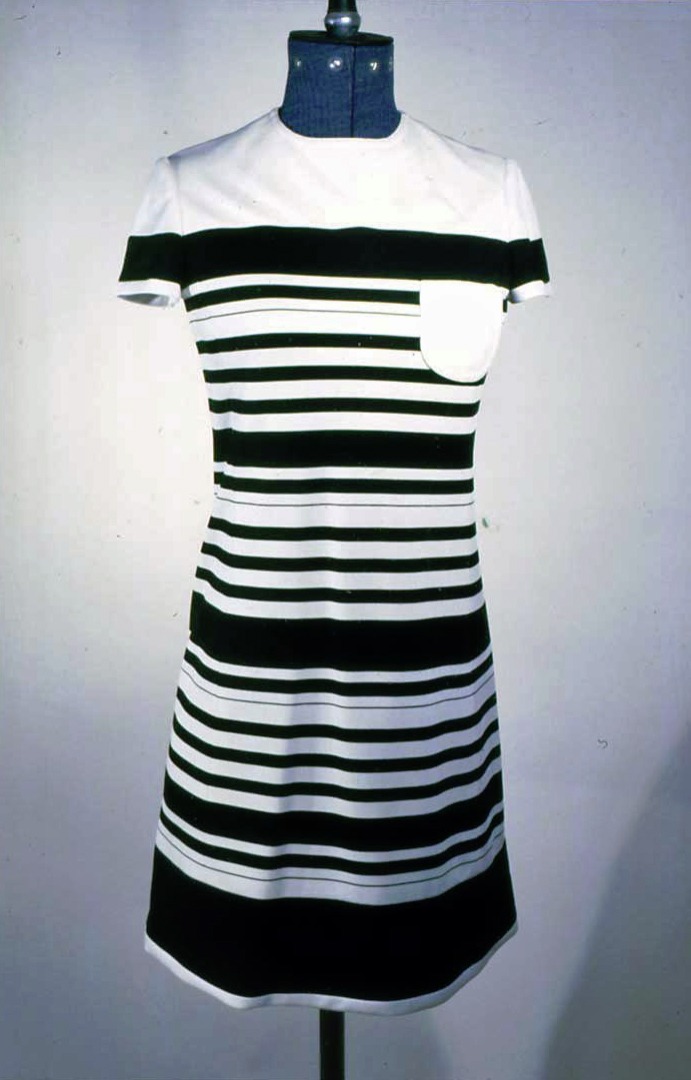
'A' line dress
The 'A' line dress was close-fitting around the upper body and the skirt widened to the knee-length hem. Christian Dior first introduced the 'A' line in 1957.
An 'A' line dress in white and black and white banded polyester jersey. The yoke, binding at the hem and a patch pocket on the left side of the bust are in white, the rest is in black and white banded. The dress is lined throughout with white polyester taffeta and fastens with a zip down the centre back.
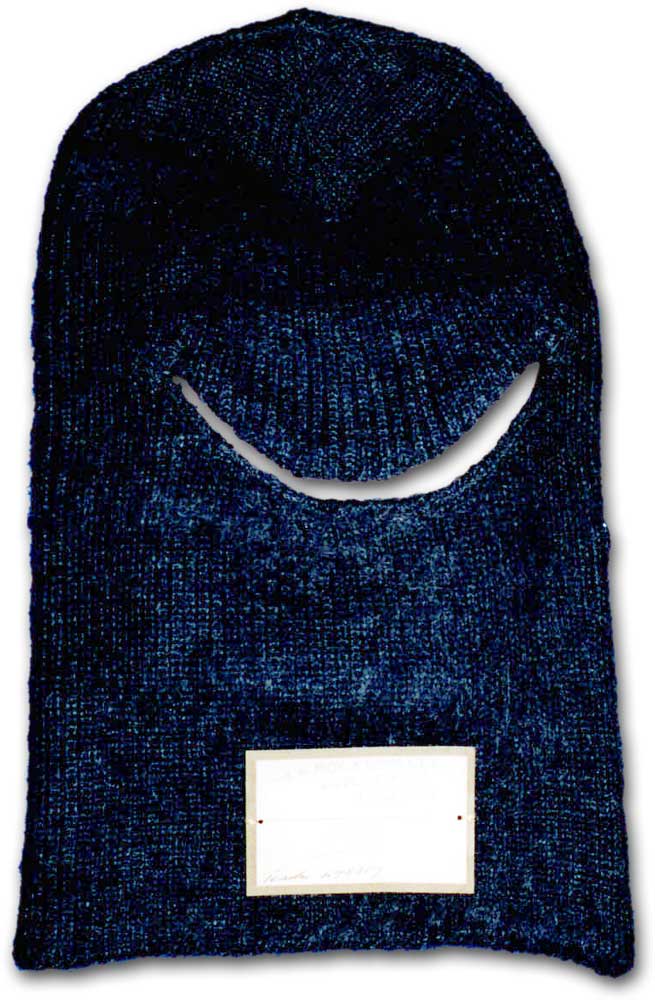
Balaclava
A knitted hood covering the head and neck.
A military pattern balaclava helmet knitted in Air Force blue wool, single curved opening with double thickness peak to form eye slit. Factory sample, label with crown AM (for Air Ministry) J Pick and Sons Ltd 1939.
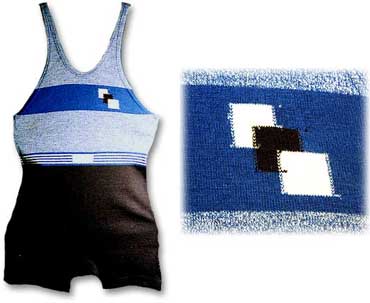
Bathing suit
Bathing suits were worn for bathing and swimming. Improved transport links to the coast enabled many Victorians to visit seaside resorts. Full body bathing suits were worn for modesty. The rise in popularity of sunbathing in the 1920s created a demand for costumes that covered less of the body. More revealing costumes were initially seen as indecent, but eventually they became accepted and developed into the swimming costumes worn today.
Man's bathing costume
A man's bathing costume imitating a singlet and trunks. The top is knitted in royal blue and white with a diagonal row of overlapping squares in white and navy blue on the chest, at the waist is a simulated belt in royal blue and white with a white rectangle as a buckle. The trunks are navy blue and have a lozenge shaped gusset. The woven label has the Tudor Head trade mark and 'Wolsey, Made in England, men's, 38'.
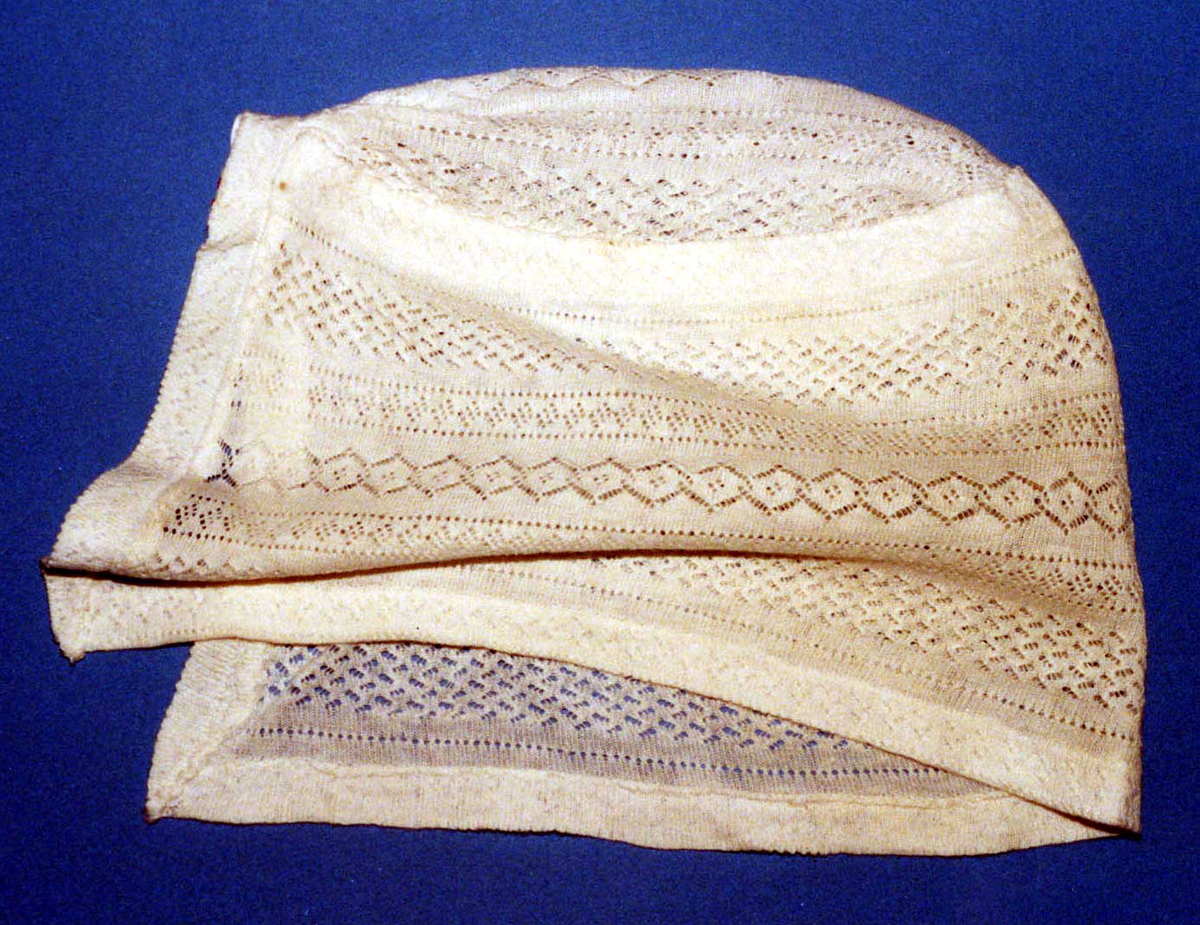
Cap
A brimless head covering, sometimes incorporating a peak.
Women's indoor cap, white cotton knitted on a hand frame, lace pattern.
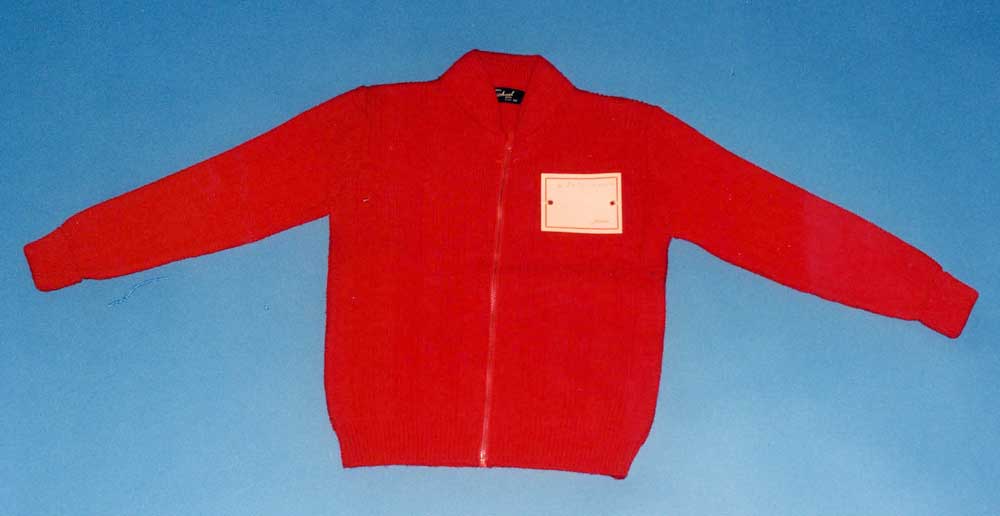
Cardigan
A knitted garment worn on the upper body which extends to the waist or below. The cardigan differs from the sweater in that it has an opening the full length of the front.
Named after the Earl of Cardigan who led the Charge of the Light Brigade at the Battle of Balaclava (1854) during the Crimean War. I. & R. Morley were making 'cardigan jackets' by 1858.
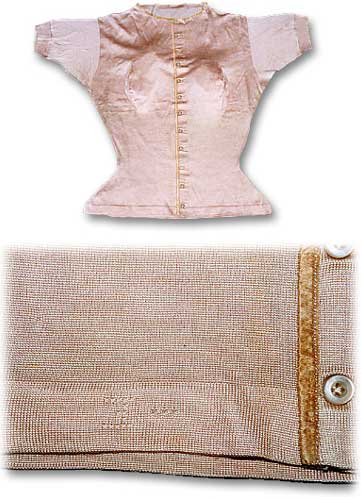
Chemise
The chemise was a loose-fitting, shirt-like piece of underwear with long or short sleeves. The length of the chemise extended either to the hip or the knee. Medieval undergarments worn by men were referred to as chemises, but subsequently they were generally known as shirts. The term chemise is widely used to indicate female underwear.
During the fourteenth century, women wore a chemise of linen or silk underneath a bodice. Men at this time wore the chemise under an ankle-length robe. The chemise continued to be worn as the gowns worn by women evolved during the Tudor and Stuart period.
Early eighteenth century chemise sleeves were decorated with elaborate frills that were visible beyond the short sleeves of gowns worn over the chemise. The edge of the chemise was also visible at the low neckline. From about 1740 chemise sleeves became hidden beneath the sleeves of dresses and other garments.
The chemise continued in wear into the 1920s, but from the 1870s its place was increasingly taken by a garment which joined the chemise or camisole and drawers to make combinations.
Ladies' short vest made from pale lilac silk. The vest has short sleeves has bust shaping and is shaped to fit waist and hips. The letter 'E' is working into the garment on the front right hip. These combinations are on loan to the museum.
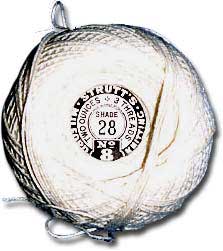
Cotton
The cotton plant can be found across the world in Australia, Africa, North America, Central America, Brazil and other tropical countries. The plant produces seeds wrapped in a 'boll' of soft fibres suitable for the production of fabrics and clothing. Archaeologists have found evidence for the early use of cotton in Mexico dating back to 5000 B.C. The first farming of cotton is thought to have taken place in India, followed by Egypt and Peru.
Man has since developed new strains of cotton that produce higher yielding seed heads. Today there are five key varieties of cotton grown, Egyptian, Sea Island, American Pima, Asiatic and Upland. Major producers in world include the United States, China, India, Pakistan and Uzbekistan.
The cotton seed head or 'boll' consists of around 500,000 fibres, with the fibres varying in length according to the variety. The Asiatic strains have a short fibre about 2 cm in length and the Sea Island variety has the longest fibres at 4.5 cm. In common with wool and other fibres, the longer fibres are preferred and are used to make the higher quality yarns.
Once the seed heads have been picked, the fibres are separated from the seeds and other foreign matter in the 'ginning' process. The cotton fibres are then placed in a carding machine to straighten out the fibres in readiness for spinning. Combing the cotton removes the shorter fibres (linters) from the 'sliver' of cotton. The linters are a waste product from cotton yarn manufacture, but they were a valuable raw material used in the creation of rayon.
Following combing the sliver is drawn out, getting thinner and yarn-like. A roving frame, and a fine roving machine continue to draw and thin the thread. The cotton thread becomes referred to as a 'roving' at this point and is wound onto small bobbins. The final drawing takes place on the spinning frame as the roving is twisted to form the yarn.
In common with other yarns, it is possible to further process cotton yarn and add different properties to it. This includes the creation of 'lisle', 'mercerised lisle', or 'gassed yarns'.
Cotton yarn
Ball of knitting cotton marked 'Strutt's / two ounces, 3 threads, shade 28, no.8'.
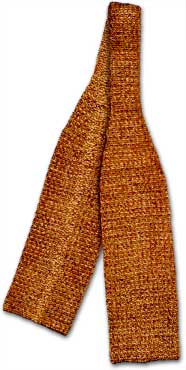
Cravat
A long strip of fabric worn around the neck and tied to the front in a bow or knot. Popularly worn by men from the mid-seventeenth century into the twentieth century.
Women's cravat knitted in brown marl silk, seamed along centre back and at ends. Woven label 'Hand-frame knitted all real silk Made in England'
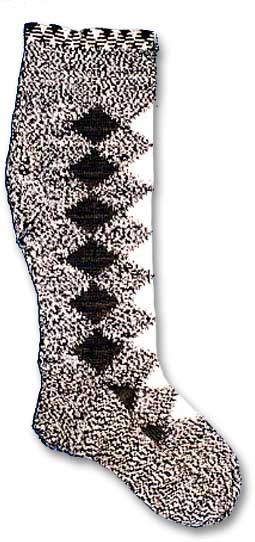
Diaper pattern
A design consisting of repeated geometric shapes, one row diagonally under the row above.
Diaper pattern sock
Black and white marled wool sock with elasticated top and diaper pattern to front. Possibly made for Great Exhibition 1862.
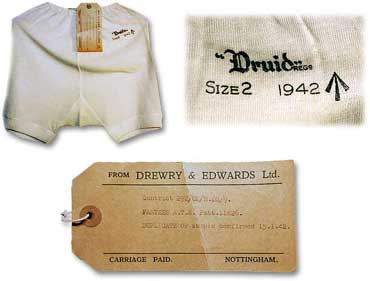
Drawers
Undergarments for both sexes covering both legs individually from the waist to the knee or ankle.
Sixteenth century drawers were made from linen cloth. By the end of the eighteenth century men were also wearing drawers of cotton, flannel and stockinet. In the 1790s close-fitting knitted drawers were introduced to wear under the tight breeches in fashion as they closely followed the contours of the body. Sometimes they were combined with stockings. From the mid nineteenth century they were usually machine knitted in cotton, wool or silk. Ankle length drawers were superseded in the twentieth century by trunks before the First World War and briefs in the 1930s.
There is little evidence for drawers for women, except for occasional wear, until the early nineteenth century. Then they were made as two tubular legs attached to a waist tape and with no seam at the crotch. From the 1860s the knickerbocker style that fastened round the leg below the knee became popular. From the 1870s they often had a crotch seam. Woven materials were generally more popular than knitted fibres until the 1920s. As skirts became shorter in the twentieth century drawers became shorter too.
Drawers were combined with vests (for men) and camisoles or chemises (for women) to make combinations in the 1870s. They proved popular with women, but most men preferred to wear separate vests and drawers.
Wartime woman's drawers in wool and rayon stockinet. Each leg is in one piece with a knitted cuff. The waist is elasticated and there is a square crotch gusset. The drawers are marked in black ink with '"Druid" Regd. Size 2 1942' and the broad arrow. They also have a manilla tie-on label printed with 'Drewry & Edwards Ltd, Carriage Paid, Nottingham' and type written with 'Contract 292/CK/N20/9 Pantees A.T.S. Patt.11826 Duplicate of sample confirmed 15.1.42'. These were for women's wear in the army. A.T.S. stands for Auxiliary Territorial Service.
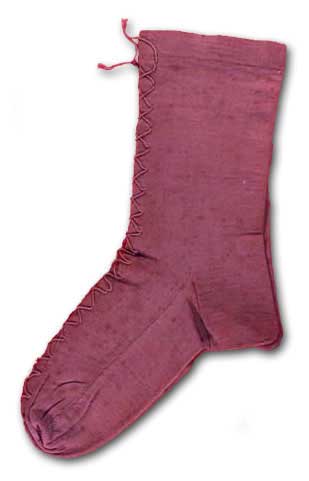
Gaiters
Gaiters were coverings of fabric or leather worn around the ankles and sometimes the lower leg, often held in place with a side strapping mechanism. They were introduced as part of the military uniform from around 1710 and were worn as civilian clothing between 1770 and 1790. Gaiters protected stockings worn underneath them from becoming dirty in situations such as wet weather or dusty roads. After 1790 they became unfashionable and were generally only used by rural or manual workers. They enjoyed a brief revival in the early nineteenth century.
Gaiters
The label which accompanied these socks to the Great Exhibition in 1851 described them as "Gaiters, Made about the year 1812, cotton spun by Mr R Arkwright". A print of 1816 shows similar socks being worn by a woman between the shoe and the stocking, probably for warmth. The lacing up the front is purely decorative. One of a collection of historic hosiery exhibited by J R Allen of Allen & Solly at the Great Exhibition of 1851 and the International Exhibition of 1862.
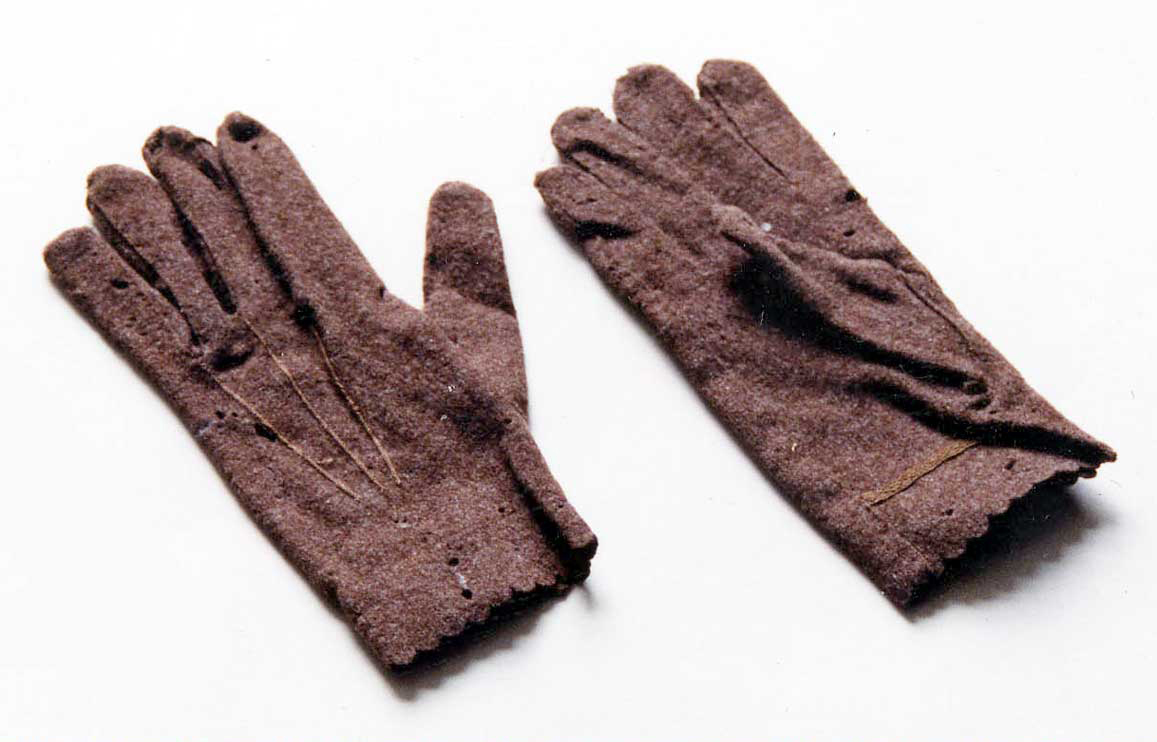
Gloves
Gloves are hand coverings that enclose each finger separately, sometimes extending over the wrist and arm. Mittens either enclose the fingers in one section (bag mittens) or are like gloves but leaving part or all of the fingers and thumb exposed.
From the mid seventeenth century to the mid eighteenth century women's gloves were elbow length. After that short gloves were worn with long sleeves for day wear and long gloves with short sleeved evening dresses until the 1840s when short gloves became generally fashionable for both day and evening wear. Gloves became long again in the 1880s. Evening gloves, except for the most formal occasions, went out of fashion in the second half of the twentieth century.
Men wore gloves for practical purposes and on formal occasions. Most were of leather and rather plain. White gloves were worn with evening dress and especially for balls throughout the nineteenth century and well into the twentieth century.
Hand knitted gloves have been worn from at least the sixteenth century. Machine knitted ones appeared in the eighteenth century. Both types continue to be worn principally for warmth. Atlas, Simplex, Duplex and Milanese are all types of machine knitted fabric for gloves, chiefly in cotton or silk.
Gloves
Made of brown and white wool each glove is made in one piece with two gussets for each finger and a separately made thumb piece. The wrist has a scalloped edge and a piece of elastic tape sewn to the inside. The points on the back of the hand are hand embroidered in brown silk close fishbone-stitch. The gloves show moth damage which explains why woollen gloves are so rare. They came from the Annabel-Cooper family of Annabel's Farm, Thorpe-in-the-Glebe, Nottinghamshire.
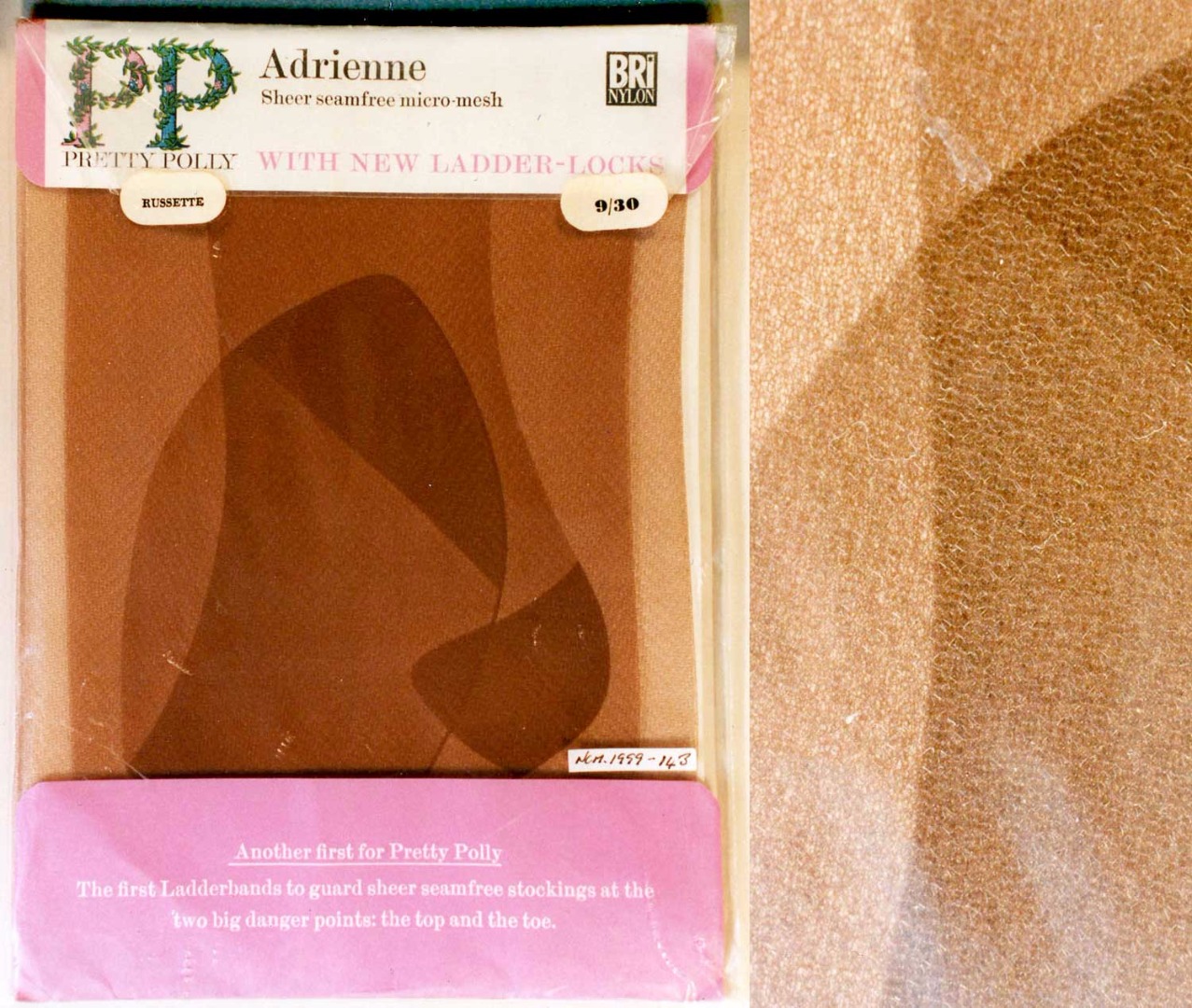
Hosiery
The term hosiery is applied to leg coverings made from tubes of fabric (hose). Stockings, tights and socks are all types of hosiery.
When referring to the 'hosiery industry', writers can either be referring specifically to the section of the industry dealing with the production of hosiery (i.e. stockings, tights, etc.) or they can mean the knitting industry as a whole.
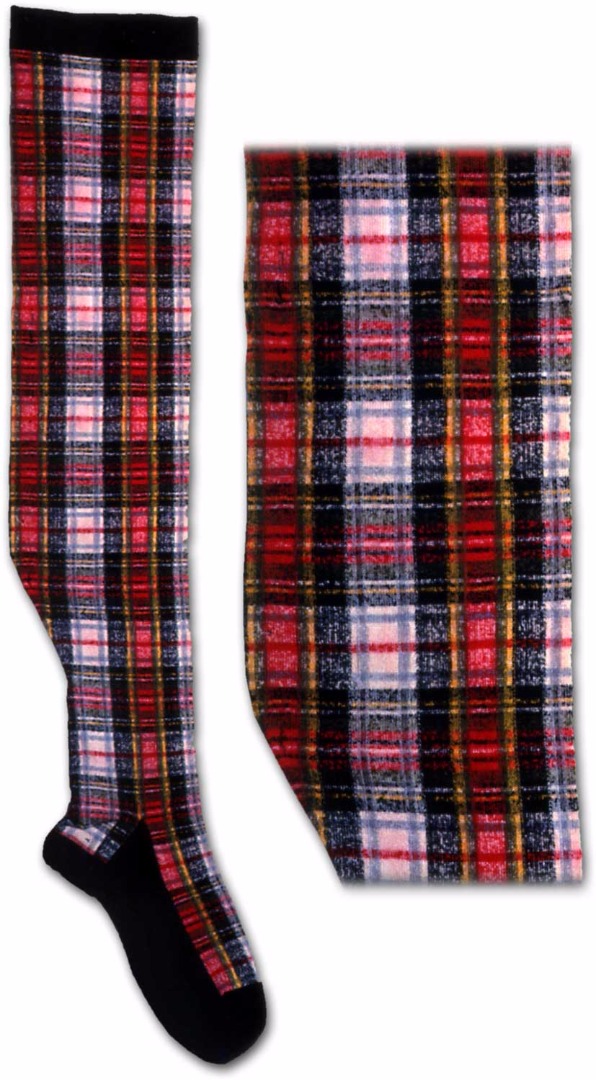
Intarsia
A knitted fabric consisting of solid areas of coloured patterning. Each coloured block consists only of the yarn creating it and yarns from adjacent colours do not pass behind. Yarns from two adjacent colours share a needle where they meet to join the two pieces of fabric. The complexity of the process made intarsia garments more expensive than plain ones.
Intarsia stocking
Tartan stockings were fashionable in the 1890s. This stocking is in Dress Stewart tartan, made using the intarsia technique. The welt, heel, toe and English foot are in dark green wool. There are no manufacturer's marks.
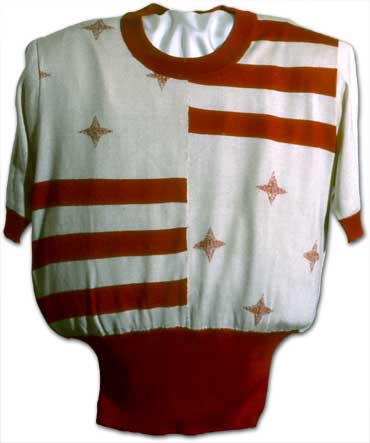
Jumper
A knitted garment which extends from the neck to the waist or below. Commonly worn from the First World War onwards.
Jumper
A woman's jumper in spun red and white silk. The back is plain, the front has rather an heraldic arrangement of bands and stars. The neck, short sleeve and waist have bands of red ribbing. According to the information that came with it, this jumper was made on a 34 gauge machine and "was supplied to a Paris couturier in 1924". Chanel was one of the first Parisian couturiers to use silk jersey, inspired, apparently by the silk underwear worn by her lover, the Duke of Westminster. This jumper might have been supplied to her in 1924.
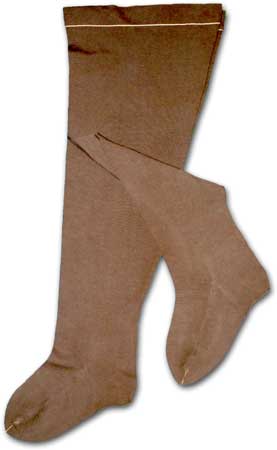
Lisle
To create lisle, one thread is twisted an extra twist per inch than ordinary yarns in one direction and a second thread is twisted at the same rate in the opposite direction. The two threads are then combined and twisted together. The extra twists in lisle yarns give additional strength and resilience. Due to the additional processing required to make lisle, it is more expensive than basic cotton yarn. The additional costs and quality aspects meant that Sea Island cotton was often used to produce lisle.
Taking the lisle yarn and exposing it to a caustic soda solution creates mercerised lisle. The process adds a lustre and additional strength to the yarn. Mercerised lisle was often used to reinforce the heels and toes of stockings. The yarn is was used to produce fine gauge sheer stockings known as 'Chiffon-Lisles'.
Cotton lisle stockings
Fine lisle hose.
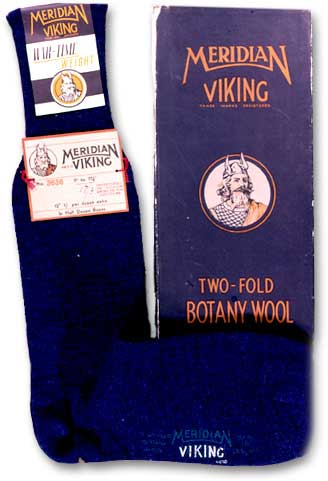
Marl
Marl is a speckled look used in the manufacture of knitted products. The appearance is achieved by twisting two threads of different colours together. When knitted, the two colours show through as a random pattern.
Marled wool sock
Man's circular knitted socks in blue and black marled wool in their original box. They have deep ribbed cuffs and are stamped in green and white on the sole 'Two-fold Botany Wool, Meridian Viking Regd, Made in England' and in white on the toes 'Wartime Weight'. The socks also have paper labels printed in orange, brown and red 'Meridian Viking No.3636, 9" to 11 1/2" 18/3, 12" 1/- per dozen extra, Prices subject to variation owing to war conditions, in half dozen boxes.' The box is covered in brown paper and printed in orange.
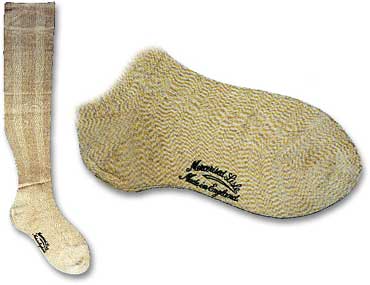
Mercerised Cotton
John Mercer discovered while experimenting with cotton threads and chemicals that if the thread was soaked in a caustic soda solution it became semi-transparent, contracted and thickened. The flat filaments of the cotton seed head swelled and became cylindrical. The process resulted in a shiny finish and stronger yarn. The processed yarn is known as Mercerised Cotton.
Mercerised cotton lisle stockings
Pair of seamless stockings in yellow, white and grey mercerised cotton lisle, knitted in vertical openwork stripes.
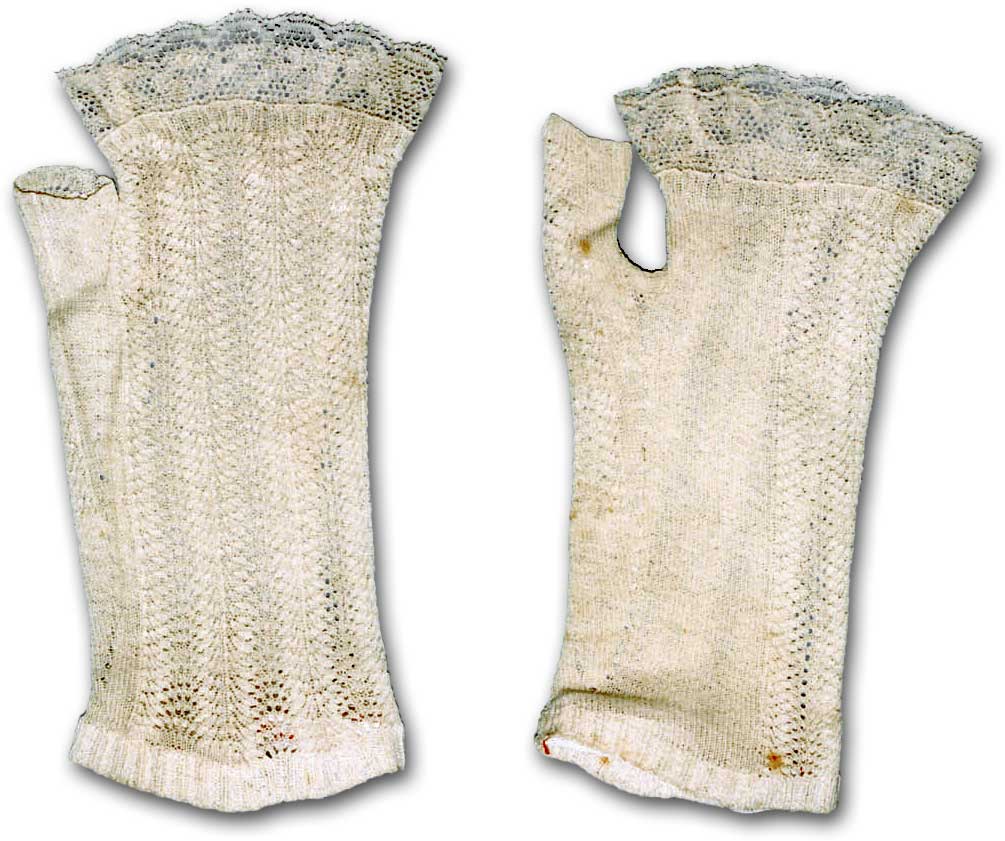
Mittens
Mittens are like gloves but leave the tops of the fingers and thumb exposed. Bag mittens enclose the fingers in one section, with the thumb in its own section.
Mittens gained popularity during the seventeenth century. Women often wore lace mittens in the warmer summer months. During the mid nineteenth century, black silk mittens were worn during the day and white ones during the evening. Net or openwork decoration was often used for mittens. After 1850 mittens became less popular and short kid gloves were worn in their place. Evening mittens were revived as an alternative to gloves in the late nineteenth century.
Mittens
Pair of white knitted lace mittens with torchon lace frill over knuckles.
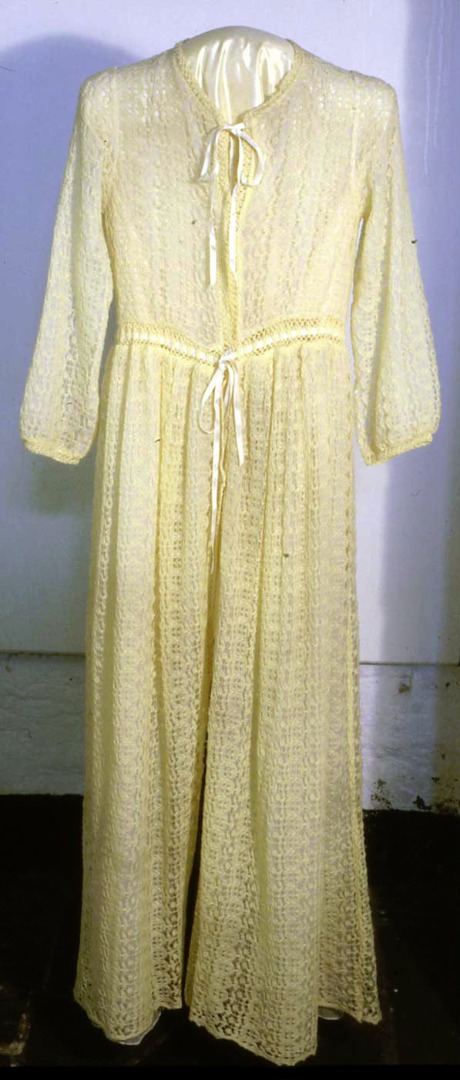
Negligee
A woman's garment worn while dressing or relaxing. Usually of soft fabric, sometimes semi-transparent, finished with decorative trimmings. More insubstantial than a dressing gown or bathrobe.
Negligee
A negligee or dressing gown in machine knitted wool lace patterned with rows of ovals with four holes and rows of spiders over white nylon gauze. The bodice has a high neck and three quarter length sleeves. The skirt is long. Fastening is by white buttons and crochet loops on the bodice, yellow ribbon ties at the neck and ribbon threaded through crochet at the waist.
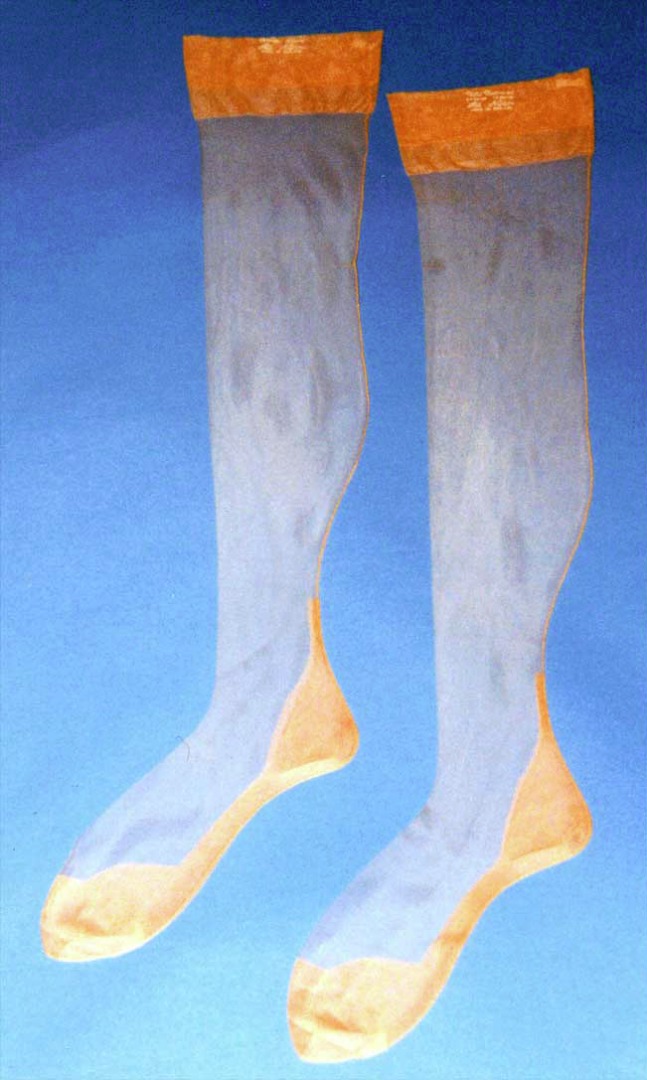
Nylon
The quest to create a man-made fibre had resulted in the creation of rayon during the nineteenth century. Rayon led the way in new yarn technology and inspired research into further man-made materials. On 27 October 1938 the discovery of nylon was announced. Instead of using a cellulose base (plant extracts) as rayon had done, nylon was created from organic compounds extracted from coal, water and air.
Experiments heated a dibasic acid (e.g. oxalic acid, sulphuric acid) and an organic compound to create a reaction that formed a chain of molecules. Nylon was produced from phenol extracted from bituminous coal (the organic compound) and oxygen (used to form the dibasic acid). The mixed solution was forced through a metal disc with small holes and set when it came into contact with the cool air. Rayon required further processing at this stage to make it set. The force applied to extrude the solution and the rate at which it was drawn from the nozzle controlled the thickness of the yarn. Pigments could be added to the mixture prior to extrusion to change the final appearance of the nylon. A white pigment was used to control the lustre of the yarn and colour pigments created yarns in a range of tones. Stockings made with coloured yarns were referred to as 'Ingrain Hosiery'.
To prepare the yarn for knitting the nylon was stretched by winding it from one spool to another. The receiving spool would rotate at a faster speed than the feeding spool and stretch the nylon in the process. The process improved the elasticity of the yarns and increases its tensile strength. This resulted in a yarn ideal for knitting stockings. In comparison with other fibres traditionally used for stockings, nylon was more resistant to wear and snagging. Nylon was also more robust than other fibres when brought into contact with liquids. Water and commonly used detergents did not affect nylon, unlike rayon, which often tore when damp. The nylon yarn only absorbs a small quantity of water and dries out quickly after washing.
The wetting and thermal properties of nylon were also used to shape stockings. Steamed applied to a stocking placed on a shaping board (a thin piece of wood the shape of a leg) caused the nylon to become more plastic and take on the shape of the board. Once dried the shape would be retained, even during washing, as long as the original setting temperature was not exceeded. This process, known as 'pre-boarding', ensured that circular knitted seamless hose were able to offer a tight fit around the ankles.